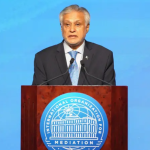The path a microscopic soot particle may take when inhaled could be as follows: Even the tiny air sacs that aid in gas exchange are penetrated by the particle as it passes through your nose and into your lungs. It may then pass through the blood-brain barrier or enter your circulation and travel to your heart.
Every day, the majority of us breathe in some of these microscopic particles. However, breathing enough can become an existential hazard, causing or exacerbating respiratory infections, asthma, COPD, and irreversible lung damage. The specks in the heart can cause heart attacks, heart disease, and the majority of cardiovascular conditions you can imagine. Additionally, there is a correlation between air pollution and increased suicide rates as well as anxiety and depression. It is associated with dementia or Parkinson’s disease, even at average levels in this nation, and can cause strokes.
Additionally, these particles can pass through the placenta and impair a baby’s lung function prior to birth. A pre-polluted baby is more likely to be born early and weigh less. A higher risk of autism is linked to exposure to contaminated air during pregnancy, and behavioral and cognitive issues, including a lower IQ, have been linked to exposure during childhood.
According to Alison Lee, a pulmonologist at the Icahn School of Medicine at Mount Sinai, “once you’ve lost lung function, you can’t get it back.” A person’s lungs can continue to develop until the age of 25. Long-term exposure to air pollution can harm children’s health and put them at risk for developing health issues as adults.
Although it’s difficult to imagine someone dying from air pollution, it happens frequently. According to estimates, particulate matter causes between 100,000 and 200,000 deaths annually in the United States, more than twice as many as car accidents. These deaths can occur as a result of heart attacks, asthma attacks, or other unexpected events, or as an underlying cause of chronic diseases.
Despite improvements in American air quality, scientists have discovered that even relatively low particulate matter concentrations can pose serious risks.
As a result of burning things for fuel and allowing the residue to drift into the air and then into us, which is what happens unless the government regulates that process, all of this is caused by a toxic and largely invisible danger. But the Trump administration hasn’t been particularly interested in doing so.
The administration is taking actions that will promote more pollution while suppressing the evidence of its negative effects through new regulations and drastic budget cuts. Americans will probably breathe less safe air.
As of right now, the EPA has declared that it will pursue a number of environmental rule rollbacks, including an update to particulate matter standards from the Joe Biden administration that were supposed to be fully implemented by 2032. Up to 4,500 premature deaths and 800,000 cases of asthma could be avoided in that year alone, according to EPA projections, resulting in up to $46 billion in health benefits.
It also intends to review a rule that restricts the amount of arsenic and mercury that power plants can emit into the air. “The U.S. has already made major gains in air quality,” the EPA said in a statement announcing one of these rollbacks, suggesting that these are sufficient.
“Clean air, land, and water for EVERY American” is EPA Administrator Lee Zeldin’s top priority, an agency spokesperson told me when I asked for comment.
Without a doubt, the air in the United States is cleaner now than it was when industrial air pollution soared into the sky unchecked. The nation’s particulate air pollution has decreased by over 30 percent in just the last 25 years. However, at least one out of every three Americans lives in an area where the air quality is still dangerous.
Zeldin’s planned rollback of the particulate-matter standard is still almost twice as high as the WHO’s recommended limit for health protection. Although it will take time to roll back regulations, America’s air quality may deteriorate in the meantime.
Last month, the EPA informed companies that “the president will make a decision” and that they could just email the agency to request an exemption from specific pollution regulations. This creates a back door regardless of how they respond to those requests. Enforcement will most likely suffer as a result of the recent EPA staff reductions.
Meanwhile, decades of advancements in air quality in this nation are being undone by increasingly severe wildfire seasons brought on by climate change. Furthermore, worse wildfire seasons will result from disregarding and even accelerating climate change, as the Trump administration is doing.
Joan Casey, an environmental epidemiologist at the University of Washington whose research helped reveal the link between dementia risk and wildfire smoke, told me that the nation’s decline back toward its more polluted past “will become a steeper trajectory.”
The effects of its deregulation may also never be completely known because of the administration’s cuts to scientific research. The government has canceled grants and removed some air-quality data in recent months, and it intends to disband an entire EPA division that focuses on researching the relationship between the environment and public health.
Because you can’t regulate something you can’t prove is harmful and you can’t prove harm without research, these actions foster a kind of deliberate naivete.
Furthermore, you cannot solve a problem that you are not yet aware exists. According to Casey, the EPA’s risk-benefit analyses of air-quality regulations do not yet take into account more recent research on how air pollution may harm a person’s health, such as by causing mental health issues or increasing the incidence of neurodegenerative diseases. “I believe we frequently underestimate the actual impact,” she stated.
When I called Columbia University epidemiologist Marianthi-Anna Kioumourtzoglou, she had just received word that her grant to investigate how the effects of climate change, including air pollution, affect older adults’ cognitive function had been canceled by the Trump administration. (She and the other members of the panel were also removed from their positions on the EPA’s Clean Air Scientific Advisory Committee earlier this year.)
Nevertheless, Kioumourtzoglou has studied enough of the fundamentals of air pollution to understand how the current rollbacks will impact Americans: She informed me that there would undoubtedly be “more heart attacks, more respiratory adverse health outcomes.”
“The progression of Parkinson’s and Alzheimer’s diseases will worsen our cognitive abilities.” Anxiety and depression linked to pollution may increase. According to her, quality of life and, eventually, productivity can be negatively impacted by even a small increase in the risk or rate of any of these at the population level. A sicker nation is a poorer nation.
“The problem is that few people smoke, and everybody breathes,” she told me, adding that the risk of someone inhaling a dangerous amount of air pollution and then having their health affected by it is relatively low when compared to smoking, for instance. There is a huge overall impact if even a small percentage of the population’s cognitive function is compromised.
Kioumourtzoglou also questions how much more the Trump administration will promote the notion that Americans shouldn’t be concerned about air pollution. She ignored a report released in December by the Heritage Foundation that made the radical claim that there is no conclusive evidence linking air pollution to poor public health outcomes.
However, she is worried that the current administration might take its logic seriously after seeing other Heritage Foundation objectives implemented. The Heritage report makes an effort to challenge the reliability of decades of research by claiming, among other things, that studies that link air pollution to health effects are not randomized or controlled, hence they are unable to establish causation.
Diana Furchtgott-Roth, the director of Heritage’s Center for Energy, Climate, and Environment, stated after this story was published that the report demonstrated “no causal link between particulates and heart attacks and deaths” and was meant to inform federal policy.
This is an attack on the entire scientific method, not just the study of air pollution. Because it would be unethical to expose people to air pollution in a lab setting to see how ill they get, for example, the majority of public health research is observational by necessity. Rather, researchers collect information from populations that have already been exposed and attempt to determine how various factors impacted individuals’ health.
To ascertain causal relationships from sizable collections of studies, researchers have developed biostatistical techniques over decades.
“They’re not making that assessment on one or two or three studies,” say EPA scientists and regulators, when they associate a pollutant with a health consequence. “It’s decades of scientific publications,” Brown University biostatistician Corwin Zigler, who was a member of the Biden administration’s EPA scientific advisory panel on air pollution, told me.
The reasoning in the Heritage Foundation report did not surprise him: Basic air pollution research had been called into question by the head of the previous Trump administration’s air pollution advisory panel. The National Academies of Sciences, Engineering, and Medicine responded by conducting a thorough review of the EPA’s methodology for determining causal relationships. The review found the EPA’s methods to be scientifically sound, but it did suggest that the agency’s process be more transparent.
According to Zigler, he is certain that particulate matter is harmful at the levels that are currently present in the US: “That is the scientific consensus.” That takes every single scientific study’s limitations very seriously.
Research on the effects of air pollution on entire populations is presented in terms of percentages and probabilities, but it actually represents a large number of people whose everyday lives have been visibly worsened.
A few years ago, Lee, a pulmonologist at Mount Sinai, started to take her job personally when her 5-year-old son started having asthma attacks that would take him to the ER. Given how common asthma is, an attack may appear to be a common and treatable medical condition. However, those who have experienced a severe one will tell you otherwise.
In my years of covering air pollution, I’ve heard people compare asthma attacks to being suddenly a fish out of water and suffocating on land, or to feeling like someone is stepping on your ribs with their entire weight. It is a traumatic incident.
Given her knowledge of air pollution, Lee made the decision to relocate her family from New York City to the suburbs a year and a half ago; they haven’t visited the ER since.
Lee told me, “Obviously, we know that where you live determines your health,” but few people have the courage to completely change their lives in order to breathe cleaner air. Along with efforts to worsen the air quality for everyone, the Trump administration is also reducing the programs designed to address these geographic disparities.
According to EPA Administrator Zeldin, the administration’s goal is to “unleash the Golden Age of American prosperity,” which includes these rollbacks. Prosperity, however, does not entail denying a child cognitive ability or choking to death in one’s own home. Any wealth that is promised here will only be distributed at the expense of others.













